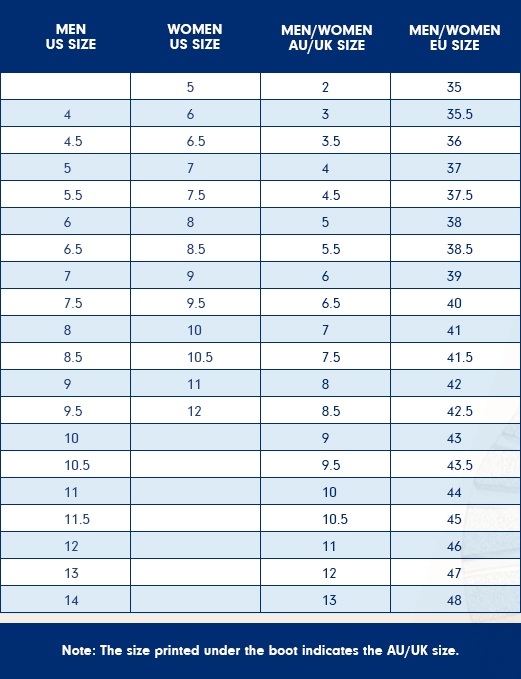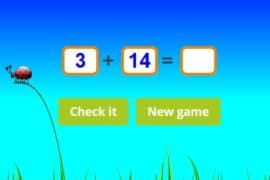Converting Australian Shoe Sizes to US for Kids: A Parent’s Guide
Hey there, awesome parents! Are you confused by the jumble of numbers when trying to buy shoes for your kids? Fret not! If you’ve ever found yourself staring at the adorable shoes online or an overseas size chart, scratching your head at the Australian to US shoe size conversion, this guide is here to save the day (and your peace of mind)! Hold onto your kangaroos folks, because we’re about to make those trans-Pacific shoe shopping trips a walk in the park!
Understanding Shoe Size Differences
Before we hop into conversion tables and tips, let’s untangle some of that shoe size spaghetti. Shoe sizes can differ enormously from country to country, which is why an Australian size might not exactly match a US size. But hey, no worries, mate! With a little know-how and a trusty chart, we can navigate this with ease.
What Makes Australian and US Sizes Different?
It’s a bit quirky, just like our beloved platypuses, but Australian and US shoe sizes use different scales to measure foot length. Australian sizes are generally based on UK sizes, while the US sizes follow their own system. Don’t let that throw you off; there’s actually a method to the madness.
Tips for Accurate Measurement
Before we dive into the numbers, let’s chat about measuring those tiny, wiggly feet accurately. You’ll need a sheet of paper, a marker, and a measuring tape. Pop your little one’s foot on the paper, trace around it, and measure from the heel to the longest toe. Easy, right? Remember, it’s best to do this at the end of the day when feet are their largest.
Pro Tip: Leave a Little Room!
After you’ve got your measurement, add about half an inch or approximately 1.27 centimeters for growth and wiggle room. Trust me, your kiddo’s rapid growth will thank you for the extra space!
The Essential Australian to US Shoe Size Conversion Chart
Alrighty, let’s get down to business with that ever-so-important conversion chart. Keep this handy for reference like a boomerang you can always throw out and get back when you need it.
| Australian Size | US Size (Kids) | Foot Length (cm) |
|---|---|---|
| 4 | 5 | 13 |
Now that we have a starting point, let’s delve deeper into the conversion chart and explore how we can ensure the perfect fit for your child’s next pair of shoes, be it those sporty sneakers for running or sparkly shoes for a birthday bash. Remember, the fit can sometimes vary between different shoe brands and styles, so always check any brand-specific size recommendations before making a purchase.
Did you know that some brands also offer printable fitting charts? They can be super handy, but just make sure you’re printing it at 100% to get an accurate measure. You wouldn’t want to end up with thongs (flip-flops) that can fit only your family’s pet cockatoo, now would you?
Alright, let’s go through the steps to ensure that perfect shoe fit. Ready, set, let’s convert!
Step-by-Step Conversion Guide
First up, grab the measurements you took previously. Got ’em? Great! Now we’ll align those measurements with the closest Australian size. Once you’ve pinned down the Aussie size, swoop down that chart and find the corresponding US size. Easy peasy!
Hold on to your hats – we’re not finished yet! To make this even more helpful, let’s take a peek into some common questions parents have when dealing with shoe sizes. From understanding half sizes to dealing with narrow or wide feet, there’s going to be plenty more foot-savvy advice coming your way in this guide.
Stick with us as we continue to unravel the mysteries of shoe sizing, ensuring that your little Joey or Sheila gets the cozy and snug fit they deserve. Because nothing beats watching your kid jump for joy in their comfy new shoes, am I right? Stay tuned for the next installment of our parent-friendly guide where we will provide even more insights into achieving that “happily ever after” for your kiddo’s feet!

Five Things Every Parent Should Know When Converting Australian Shoe Sizes to US Sizes
1. It’s Not Just About Length – Consider the Width Too!
When converting shoe sizes from Australian to US for your munchkins, length is key, but don’t overlook the width! Kids’ feet can vary greatly, and a perfect length fit might still be too tight if the shoe is not wide enough. US sizes sometimes come in different widths, from extra-narrow to extra-wide. A quick tip is to look for shoes that have adjustable straps or laces for a customized width fit.
2. Growth Spurts – Expect the Unexpected
Children grow in the blink of an eye; one day those shoes fit, and the next day, they’re snugger than a Joey in a pouch! Always room for growth when purchasing new shoes, this means you might be choosing a US size that’s a half or a full size bigger than your child’s current Australian size, just to get a little more longevity out of the footwear.
3. Different Brands, Different Fits
While our guide is pretty spot-on for most situations, every brand can fit a little differently. It’s essential to recognize that some might run larger or smaller than the standard sizes. We recommend checking out the specific brand’s size chart for the most accurate conversion and best fit possible.
4. Sneaky Size Surprises with Specialty Footwear
Sports cleats, ballet shoes, or other specialty types of footwear sometimes have their own unique sizing. Don’t get stumped if the size you thought was perfect doesn’t seem to match up – glance over any special sizing advice from the manufacturers designed for certain shoe types.
5. Online Purchases and Returns – Be Savvy!
Shopping online from overseas can be tricky, and getting the wrong size can mean a frustrating returns process. Many online retailers provide free returns, but not all. So always know the return policies before you hit that checkout button. Be prepared to possibly order multiple sizes and return what doesn’t fit if you’re not sure about the size.
Getting the Perfect Fit – Beyond the Chart
A conversion chart is a great starting point, but fitting shoes is an art as much as a science. Here are more practical tips to ensure that the shoes you’re buying give your child the comfort and support they need:
- Check the Return Policy: Always confirm the return policy when buying online, especially from international retailers. Just in case the fit isn’t right, you’ll want to be able to swap sizes easily.
- Trace Both Feet: Kids can have one foot slightly larger than the other. Measure both feet and go with the size of the larger foot to ensure a comfy fit all around!
- Read Customer Reviews: Many online shopping sites have reviews that mention whether shoes fit true to size. This feedback can be a goldmine for sizing guidance.
- Pay Attention to Fasteners: Laces, Velcro, buckles, or slip-ons? The type of fastener can affect the fit of the shoe and the ease with which your kiddo can put them on or take them off.
- Always Consider the Socks: Will your child wear socks with their new shoes? Make sure you account for the thickness of the socks, as this can affect the shoe size needed for a comfortable fit.
Remember, converting Australian shoe sizes to US sizes isn’t a one-size-fits-all affair – pun intended! It’s about understanding the little differences, choosing wisely, and above all, knowing that a little room to grow keeps those tiny feet happy and healthy.
So next time you’re eyeing a pair of cute little runners from across the sea, let this guide be your navigator. With our help, you’ll nail that shoe size conversion faster than you can say ‘g’day’. And the best part? Seeing your child’s face light up when they step into a perfectly fitting, comfy new pair of shoes. That, dear parents, is worth every bit of the effort.
For more great articles please see here. For more information see here
Disclaimer
The articles available via our website provide general information only and we strongly urge readers to exercise caution and conduct their own thorough research and fact-checking. The information presented should not be taken as absolute truth, and, to the maximum extent permitted by law, we will not be held liable for any inaccuracies or errors in the content. It is essential for individuals to independently verify and validate the information before making any decisions or taking any actions based on the articles.




